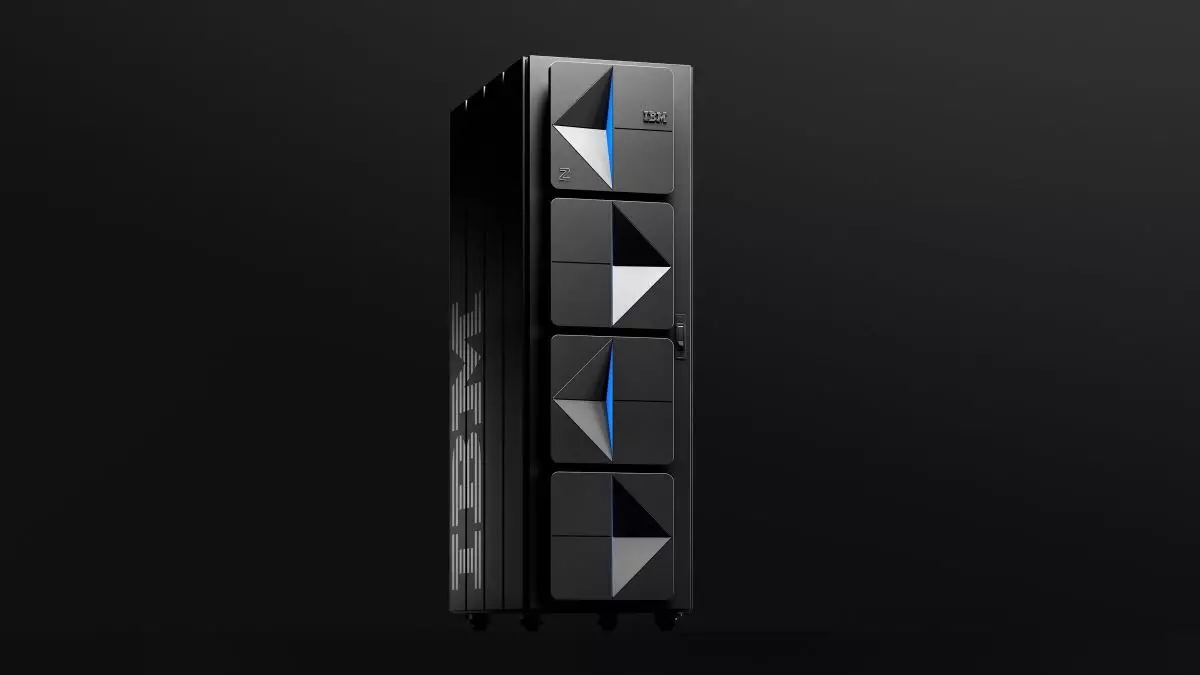IBM’s announcement of the z17 marks a significant shift in the landscape of computing technology, particularly in how businesses can leverage artificial intelligence (AI). This latest iteration of mainframe hardware integrates advanced capabilities designed specifically to enhance AI adoption across various sectors. While mainframes may conjure images of outdated technology, more than 71% of Fortune 500 companies still rely on them, confirming their enduring importance in today’s corporate infrastructure. As we enter an era where AI is becoming ubiquitous, the introduction of the IBM z17 could signal a renaissance for these powerful machines.
Transformational Computing Power
At the heart of the IBM z17 is the new Telum II processor, which showcases the company’s commitment to innovation and performance. With the ability to execute an astonishing 450 billion inference operations daily, this represents a remarkable 50% increase compared to its predecessor, the IBM z16. What’s particularly noteworthy is how this hardware has been meticulously crafted to cater to a wide range of use cases—over 250 AI applications, including advanced AI agents and generative AI technologies. The z17 is not simply an upgrade; it’s a robust platform designed to drive the future of AI in enterprise computing.
Adaptability and Integration
What sets the z17 apart is its adaptability, allowing businesses to evolve alongside emerging AI technologies. Industry experts, including Tina Tarquinio, VP of product management and design for IBM Z, emphasize the importance of headroom—enabling the hardware to scale efficiently as new AI models emerge. This proactive design philosophy is essential in an industry characterized by rapid technological advances, as it fosters an environment where companies can quickly pivot and integrate innovative AI solutions.
Further, the z17 is built with interoperability in mind, capable of integrating seamlessly with existing hardware and open-source tools. This makes it an ideal choice for companies looking to enhance their AI capabilities without overhauling their entire technological ecosystem. It invites a new paradigm where mainframes serve as versatile platforms that support a variety of AI applications and innovations.
Energy Efficiency Meets Performance
In a time where environmental concerns are at the forefront of technological development, the z17’s energy efficiency sets it apart from its competitors. Tarquinio highlighted that the z17 achieves a seven and a half times increase in AI acceleration while consuming five and a half times less energy compared to other platforms. In a world where a company’s carbon footprint weighs heavily on its reputation and operational costs, the z17 offers a path forward that aligns economic viability with environmental responsibility.
Such advancements in energy efficiency combined with powerhouse performance are crucial for businesses aiming to harness AI capabilities without compromising sustainability. This positions IBM as not only a leader in computing but also as a conscientious player in the ongoing discourse around climate impact.
A Five-Year Vision in a Rapidly Changing Landscape
The development of the IBM z17 is a testament to a long-term vision that predates the current AI enthusiasm sparked by breakthroughs like OpenAI’s ChatGPT. Over 2,000 research hours were invested, gathering insights from over 100 customers to ensure the z17 meets the evolving demands of the marketplace. This foresight is commendable and demonstrates IBM’s understanding of the importance of aligning technology with market trends.
As businesses grapple with the complexity of AI integration, the z17 positions itself uniquely as a bridge between legacy systems and modern tech needs. With the component roadmap, including future expansions featuring additional AI accelerator chips, IBM is preparing its clientele for the next wave of AI transformation. The z17 not only promises to support contemporary AI models but also gracefully welcomes future advancements.
Looking Ahead: The Path Forward
The introduction of the IBM z17 resonates beyond its technical specifications; it embodies an aspiration for a technology landscape where AI is accessible and beneficial for businesses of all sizes. By fostering innovation and flexibility, IBM is redefining the role of mainframes in the AI era. As the z17 approaches its general availability date in June 2024, anticipation builds for a slew of capabilities that promise to empower organizations in their digital transformation journeys.
In a global economy driven by AI, the IBM z17 isn’t merely another mainframe; it’s a clarion call for the future—one where businesses can harness the full potential of artificial intelligence while being mindful of energy consumption and infrastructural changes. IBM’s latest offering is not just a nod to technological prowess; it’s an invitation to reimagine what’s possible in the world of computing.

